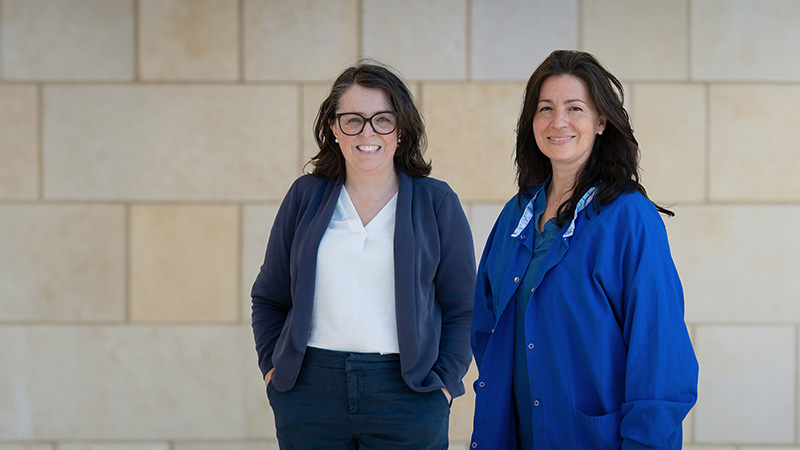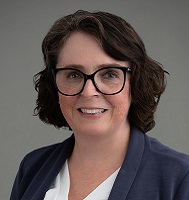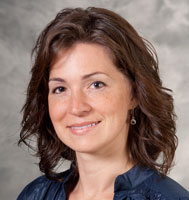
After two years of planning and preparation from 2020 to late 2022, Allison Redpath, MD, associate professor and medical director of pediatric dialysis, Division of Nephrology, and Melissa Cercone, MD, associate professor and fellowship director, Division of Critical Care, and a legion of nurses and other health professionals, were able to start a pediatric ICU continuous renal replacement therapy (CRRT) program completely separate from the acute adult dialysis program. The Pediatric CRRT Program launched in October 2022 and is now in its second year of operation. Data show that it is more effective and more beneficial than Redpath and Cercone could have imagined. “We have been able to reach four times the number of patients compared to historical norms,” Cercone said.

This program is different in its application from standard dialysis in that it is for acute kinds of kidney failure, many times caused by ischemia — an inadequate blood flow to an organ. “There is a wide range of severe illness and injury, such as a car accident, that can result in acute kidney failure because of poor blood flow,” Cercone said. “It doesn’t necessarily mean the child will go on to have kidney failure for the rest of their life. The injury is severe enough, however, that without these kinds of machines during their acute illness, there is a higher risk of harm or death.”
CRRT is a critical intervention for other types of conditions as well. “We’ve taken care of patients with infection leading to septic shock,” Redpath said. “And we’ve treated conditions after bone marrow transplant, patients who get either septic shock and/or fluid overload from all the treatments.”

In the past, there was only one place in the state of Wisconsin where a pediatric patient could get this acute renal therapy specifically for children. At American Family Children’s Hospital, services were provided through the adult dialysis program using machines that were not designed for children. In 2020, Redpath and Cercone had sufficient evidence to convince the institution it was time to invest in a program that could provide safer and more effective pediatric CRRT. Their efforts led to the creation of the now separate, self-sufficient Pediatric CRRT Program.
“Now, our nephrology and critical care groups know we can provide this therapy in a safer, more effective way,” Redpath explained. “And they are more likely to ask for it.”
In addition, the growing pediatric cardiology program at UW Health Kids has led to the admittance of more children with heart failure and complex congenital heart disease. The Pediatric CRRT Program can now better support these patients when they develop acute kidney injury or problematic fluid overload.
In planning and establishing the program, Cercone explained how having clinical experts recognize a medical need was not the same as having the operational know-how to navigate the many necessary steps at the hospital level to create an entirely new program.
“The new program, entirely self-sufficient within pediatrics, required organization of everything from maintenance of simple supply inventory all the way through teaching and training the bedside nurses,” Cercone recounted. “Working through that process was a very eye-opening and at times a very challenging process.”
One advantage to the new program is that when CRRT is started earlier in patients with fluid overload or renal failure, it can help avoid negative impacts on other organs and improve outcomes. All the organs can function more effectively “because we are controlling fluid, we’re controlling acid, and we’re controlling electrolytes, “Cercone said.
Redpath reported another benefit: “I know there was a steep learning curve for the equipment, but the nursing staff has done an amazing job growing their expertise,” she said. “The fact that the machine is so user friendly helps nurses know they are providing safe care. Safer care for kids has resulted overall in nurses being more supportive of providing the therapy.”
The timeliness and efficacy of the new system, as well as the increases in understanding of the ideal ways to optimize the therapy, have been an enormous benefit. The CRRT equipment also provides excellent feedback, allowing physicians and nurses to tailor therapy to the patient. “Our nurses are becoming bedside experts with this complex therapy,” Cercone said. “It enables us to make better decisions faster for our patients.”
“In addition, all the data generated is seamlessly sent into electronic medical records,” Redpath said, “which also helps us, not only from the standpoint of daily management, but also in looking back it’s easier to find exact information.”
Cercone noted that considerable support at the critical care nursing level was necessary to make the new program possible. It is entirely supported by nurses. “The ICU nurses now are the people who literally go to the storage room, grab the machine, set up the equipment, and operate it bedside,” Cercone said. “The ICU nurses had to develop a huge amount of expertise to be able to do this work.”
Cercone noted that credit for making all the nurse training possible and highly effective rests with Ashton Nell, nurse specialist, and Amanda Kopp, nurse manager. A new nurse practitioner in the Division of Nephrology, Emilie McFadden, NP, was previously a PICU nurse and brings a wealth of expertise to her new role as primary liaison for the Pediatric CRRT Program.
Photo composite by Bob Gordon/Department of Pediatrics